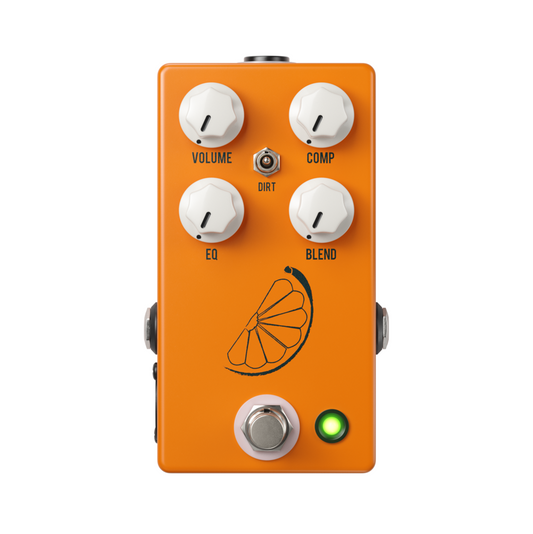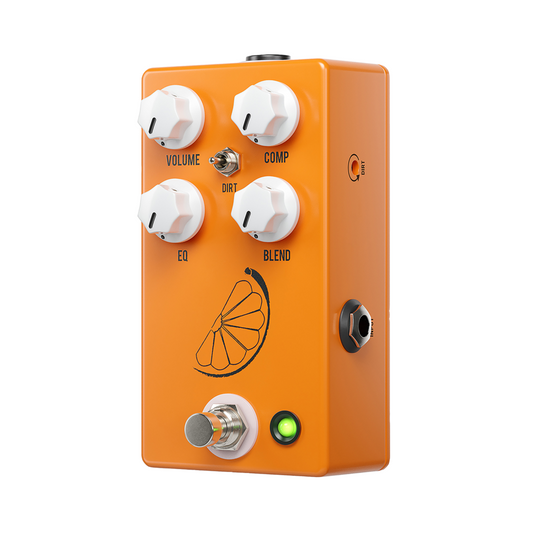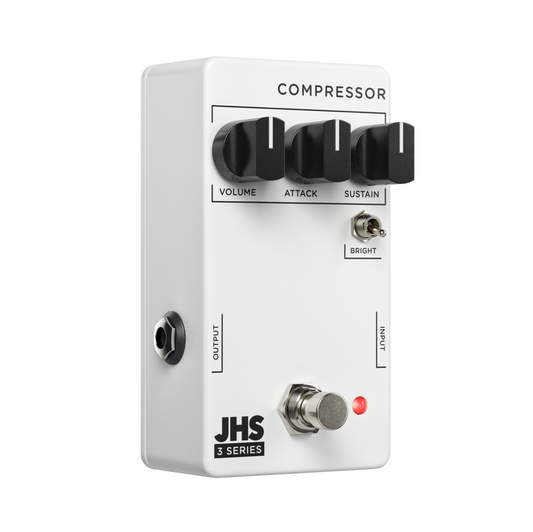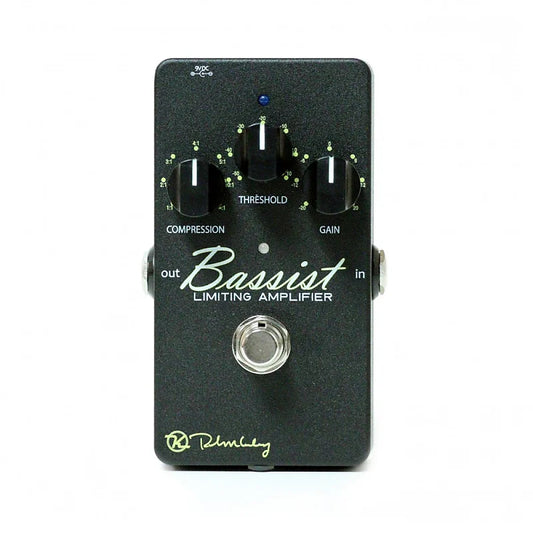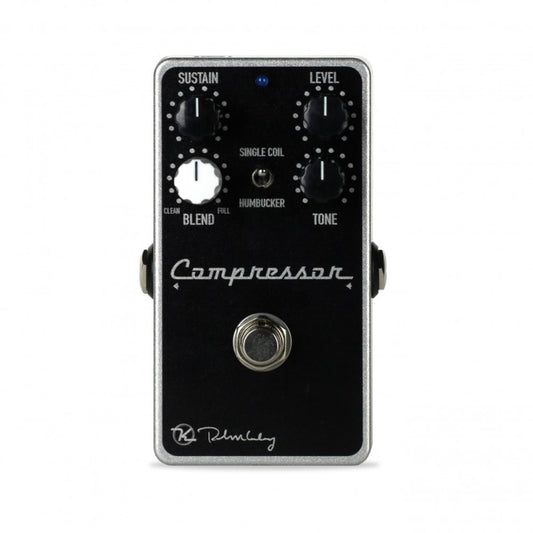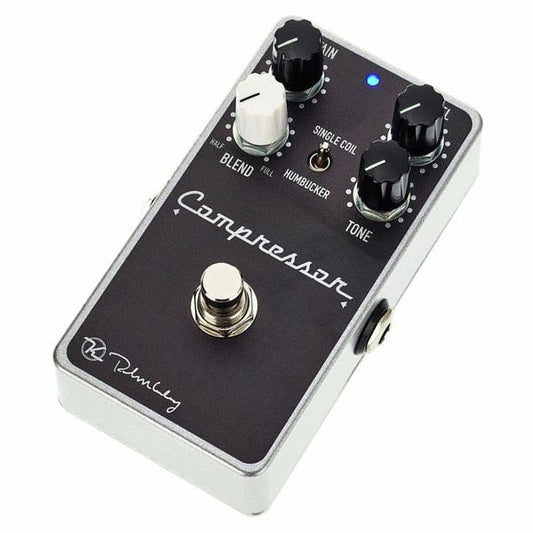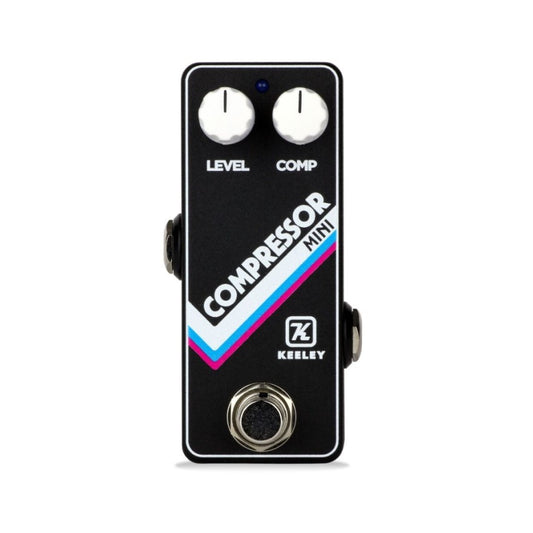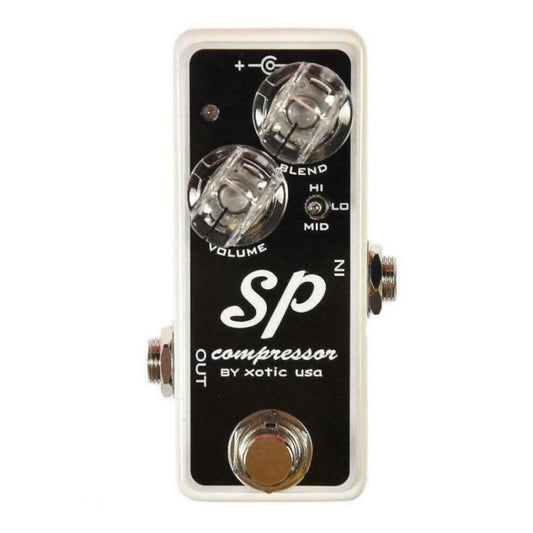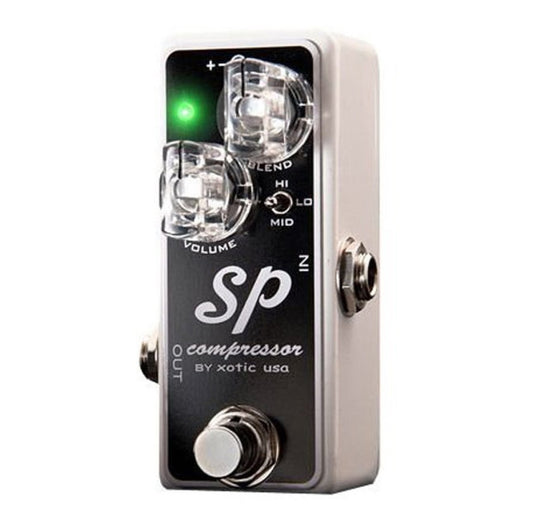Guitar compressor pedals are critical tools for many professional guitarists. How so? Its dynamic processing effects help shape and mold the guitar's sound by regulating the dynamic range of the guitar signal. Pick one up today to deliver a more balanced and controlled sound.
-
JHS Pulp N Peel V4 Compressor Pre-amp DI Box Effect Pedal
Vendor:JHSRegular price $355.00 AUDRegular priceUnit price per -
JHS 3 Series Compressor
Vendor:JHSRegular price $185.00 AUDRegular priceUnit price per -
Keeley Aria Compressor Overdrive Effect Pedal
Vendor:KeeleyRegular price $329.00 AUDRegular priceUnit price per -
Keeley Bassist Limiting Amplifier Effect Pedal
Vendor:KeeleyRegular price $329.00 AUDRegular priceUnit price per -
Keeley Compressor Plus Effect Pedal
Vendor:KeeleyRegular price $229.00 AUDRegular priceUnit price per -
Keeley Compressor Mini-Black Effect Pedal
Vendor:KeeleyRegular price $189.00 AUDRegular priceUnit price per -
Xotic SP Compressor Effect Pedal
Vendor:XoticRegular price $255.00 AUDRegular priceUnit price per
Compressor pedals can help guitarists transform their sound in the studio and while playing live. This compressor pedal is best categorized by its dynamic processing effects, which deliver several vital controls that make it possible to shape the effect to your preference. They include:
- Threshold – The threshold is the particular level when the compressor begins to engage. The compressor will reduce the volume once the input signal surpasses the threshold.
- Ratio – The ratio is important because it tells the compressor to reduce the signal volume above the threshold. For example, a 4:1 ratio means that every time the input signal exceeds the threshold by 4 dB, the output only increases by 1 dB.
- Attack – The attack determines how fast the compressor responds once the input signal crosses the threshold. Setting a faster attack catches the initial transient of your notes. A slower attack setting lets more attack pass through prior to the compressor kicking in.
- Release – The release time is determined by the length of time the compressor stops compressing once the input signal drops below the threshold. Shorter releases result in a much more noticeable pumping effect. More extended releases have a more natural sound.
What Does a Guitar Compressor Pedal Do?
The ultimate goal of a guitar compressor pedal is to take control of the dynamic range of the guitar signal, and it acts as an audio effect device. Simply put, while playing, the guitar will have volume differences between the loudest and softest parts of a particular song. This pedal effectively evens out the differences in volume.
The effects of this compressor include:
- Dynamic control
- Tone shaping
- Articulation improvement
- Sustain enhancement
- Punch and presence
Where Does a Compressor Pedal Go in the Chain?
Guitarists have a few choices when placing the guitar compressor pedal within a signal chain. Some options include:
- Before Gain Effects (Dynamics First) – Placing this pedal before fuzz, distortion, or overdrive, a.k.a. gain effects, is popular for many guitarists. The guitar can process a clean signal before the door distortion-related effects kick in. Example signal chain: guitar, compressor, overdrive/distortion/fuzz, modulation/time-based effects, amp
- After Gain Effects (Sustain Enhancement) – In this arrangement, the compressor works its magic on the signal after the distortion or overdrive effects shape the sound. Example signal chain: guitar, overdrive/distortion/fuzz, compressor, modulation/time-based effects, amp
How to Choose a Guitar Compressor Pedal
The best way to choose guitar compressor pedals is to find a brand you trust that fits your budget. Ensure the pedal contains all of the bells and whistles you're specifically looking for to achieve the best results possible.

